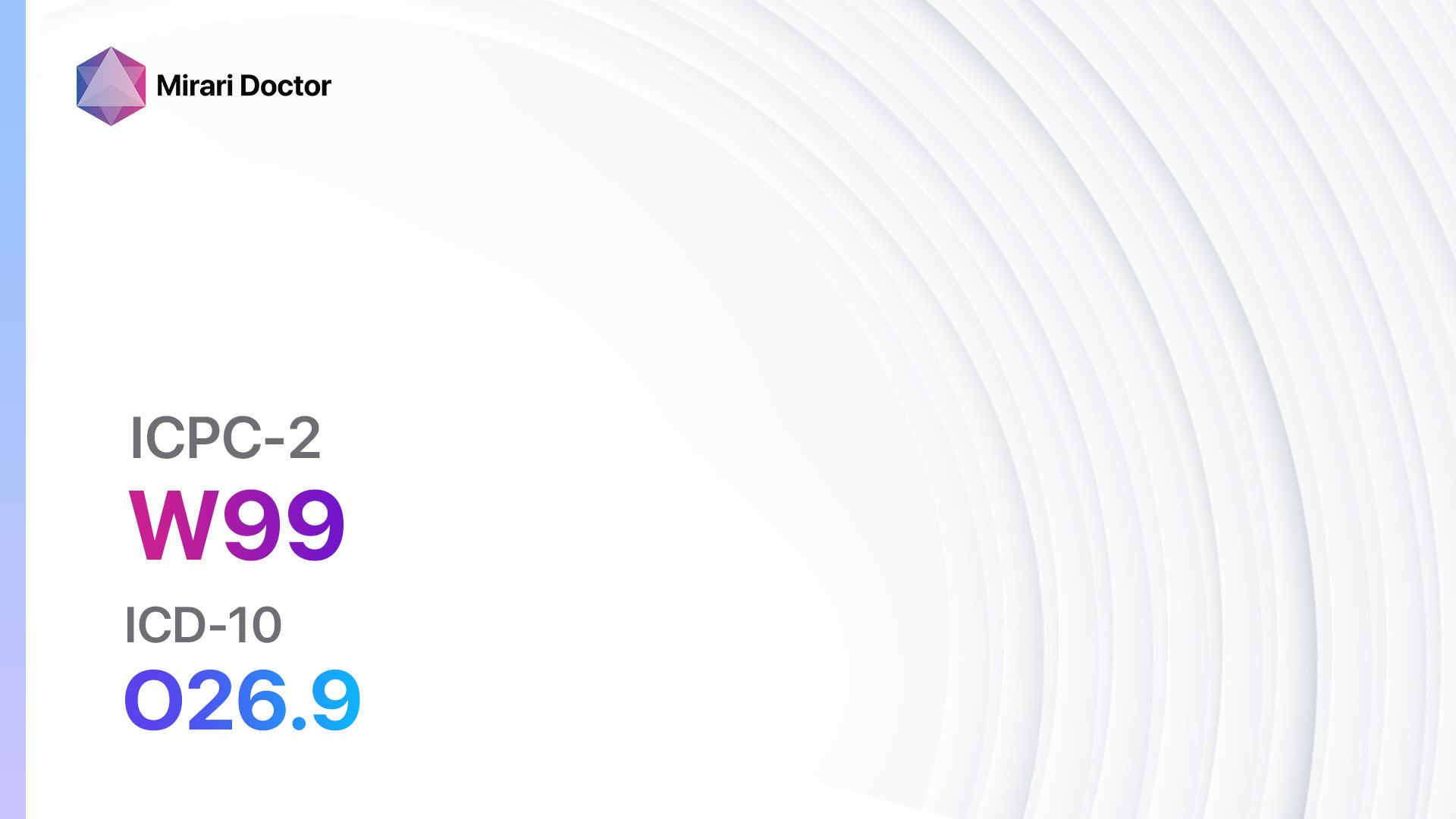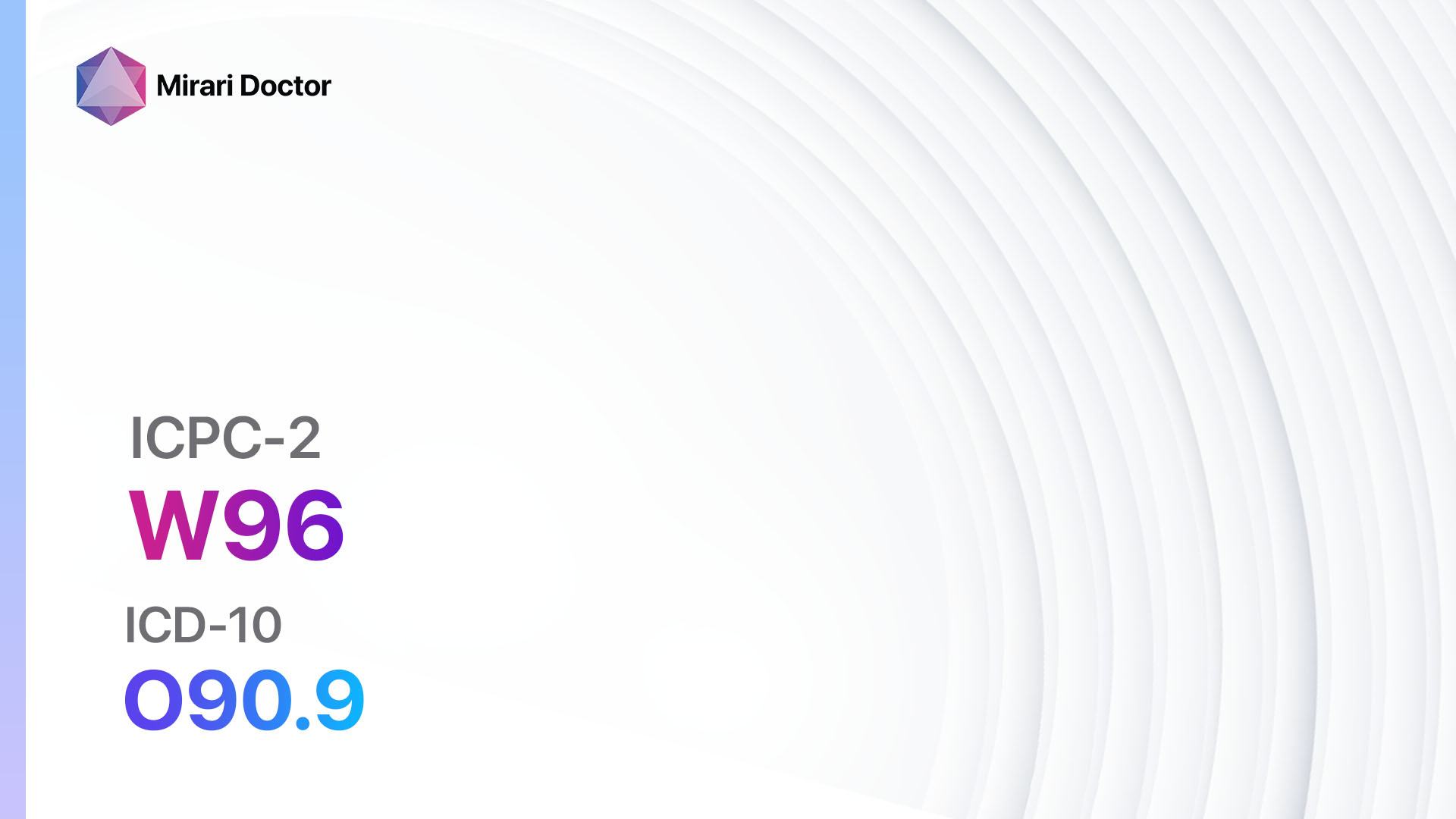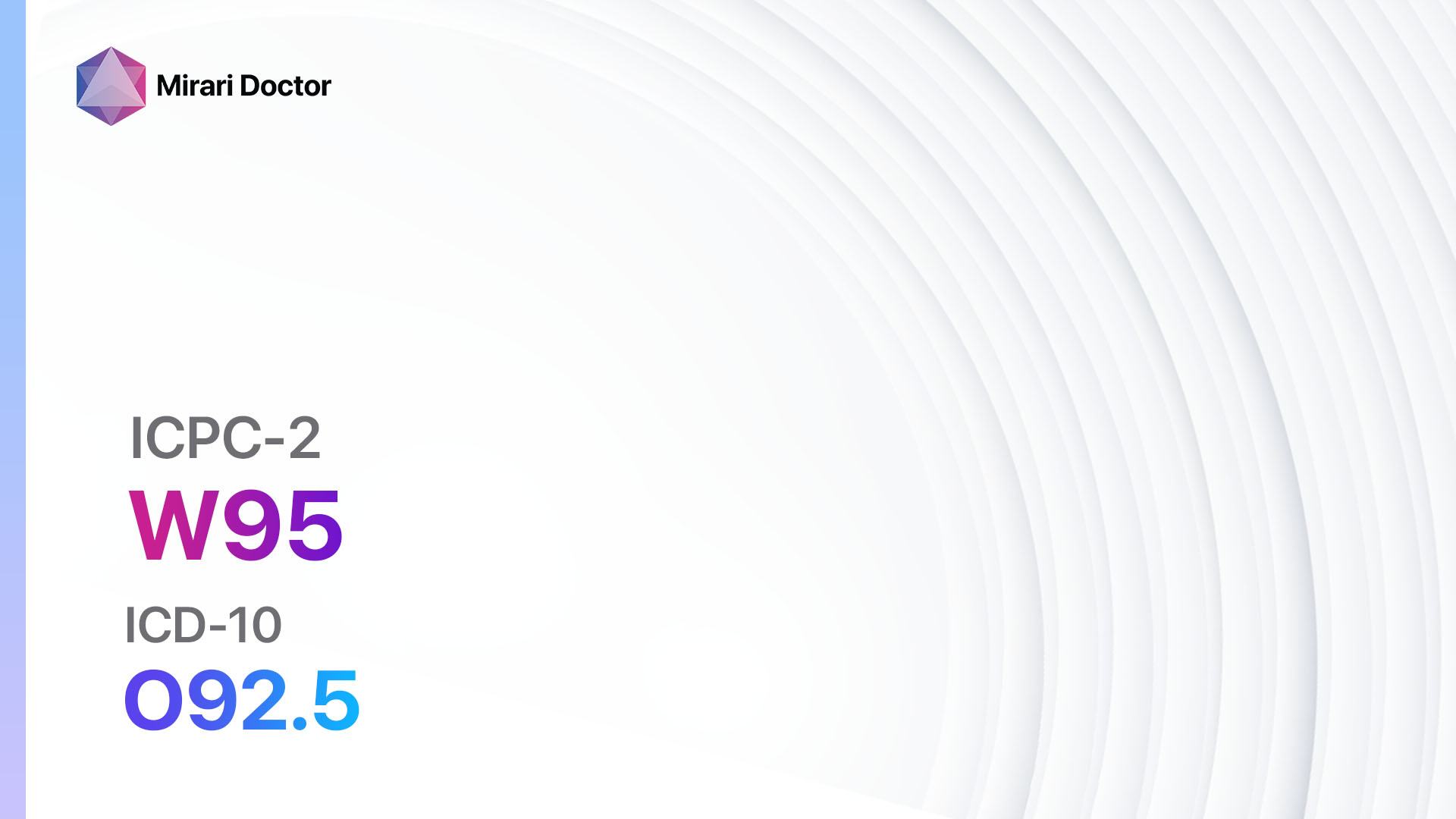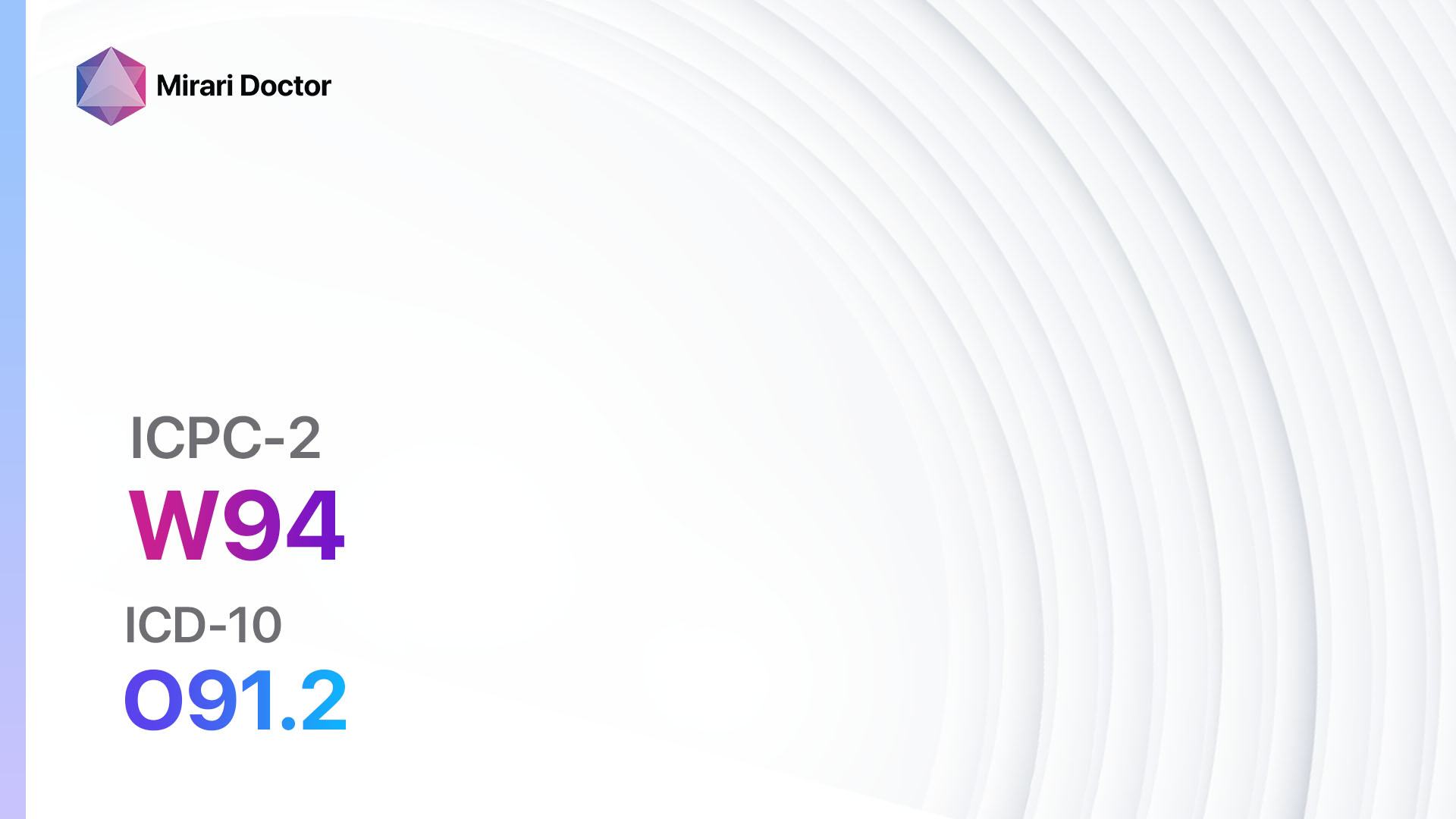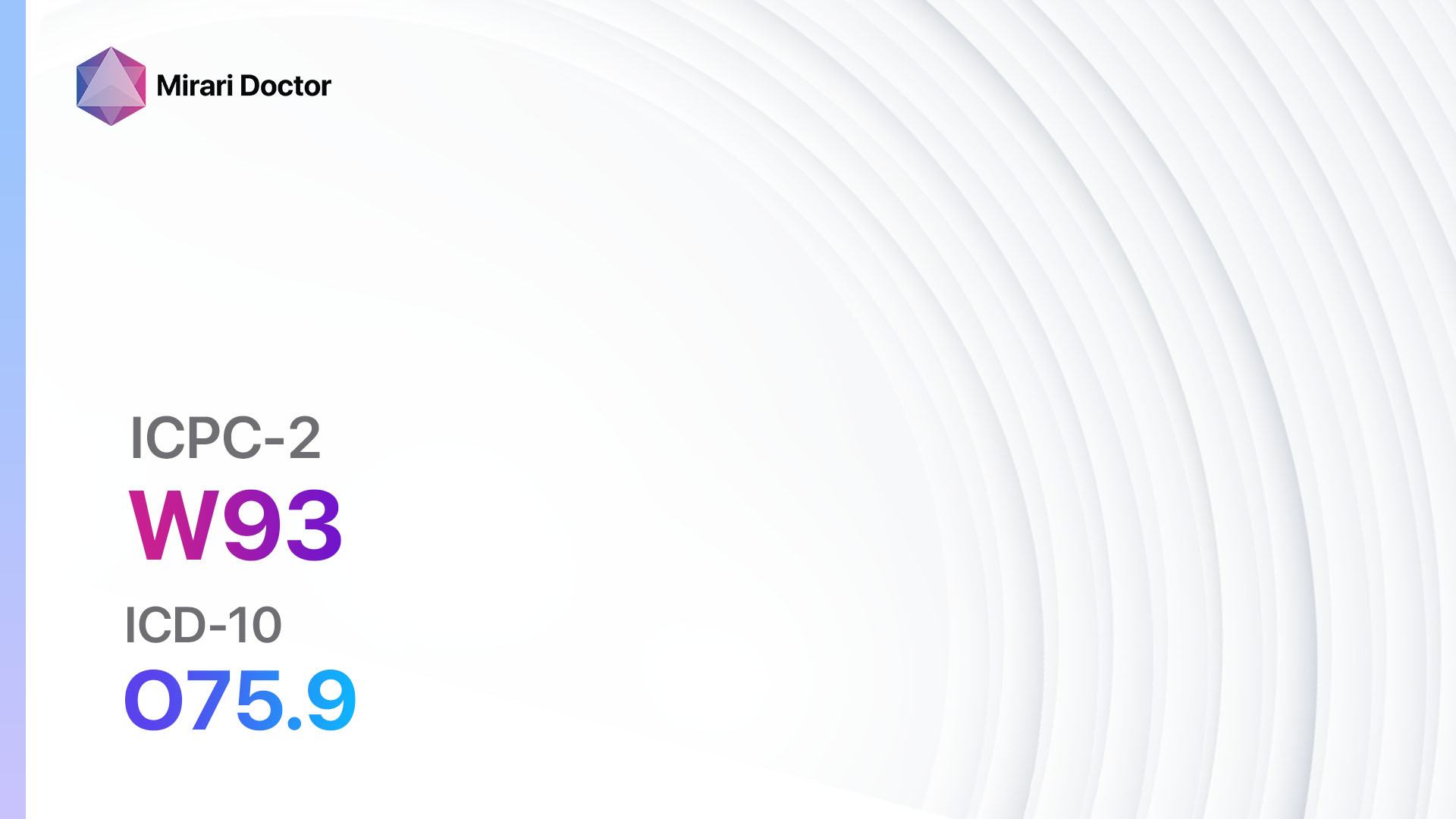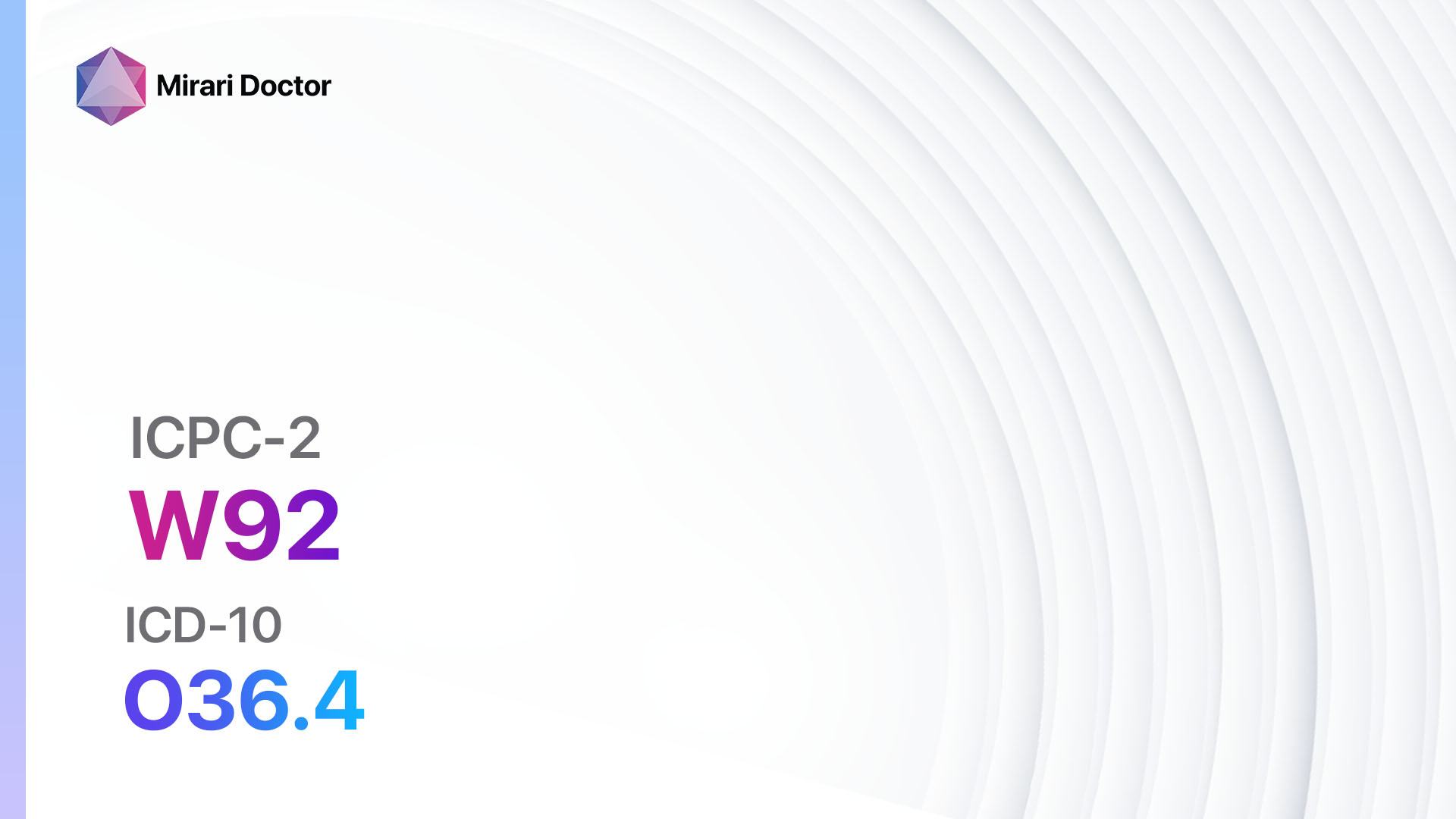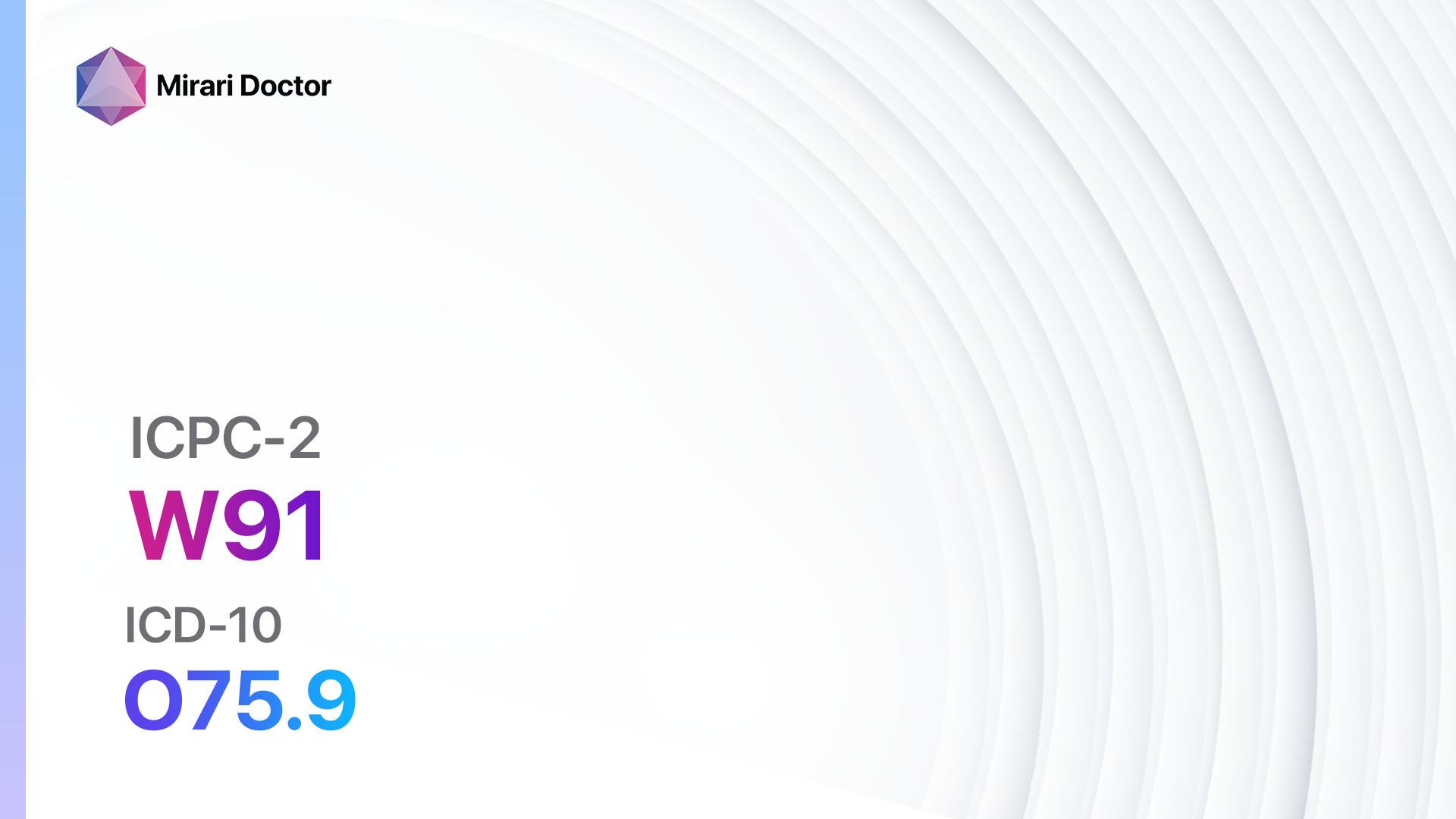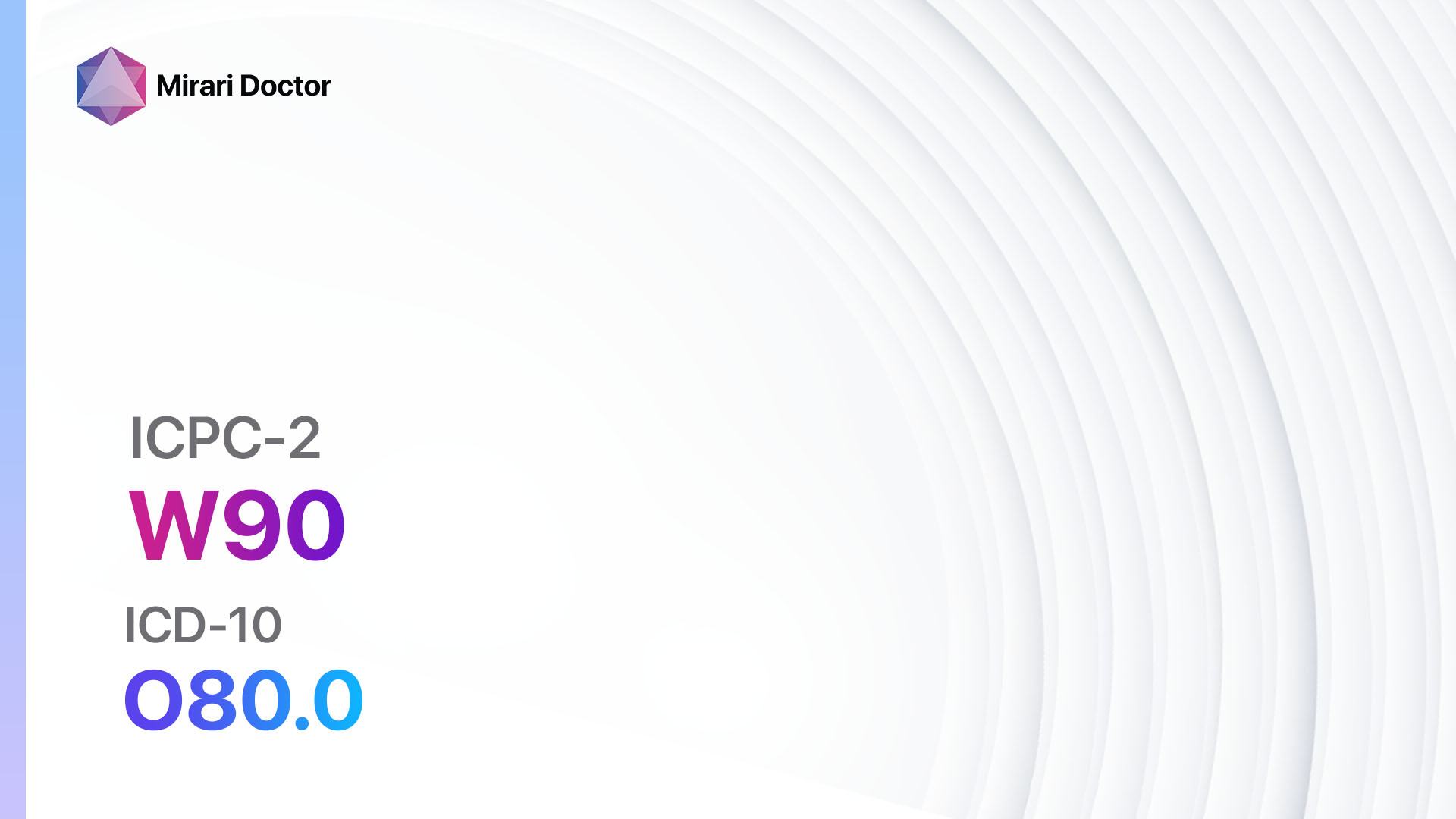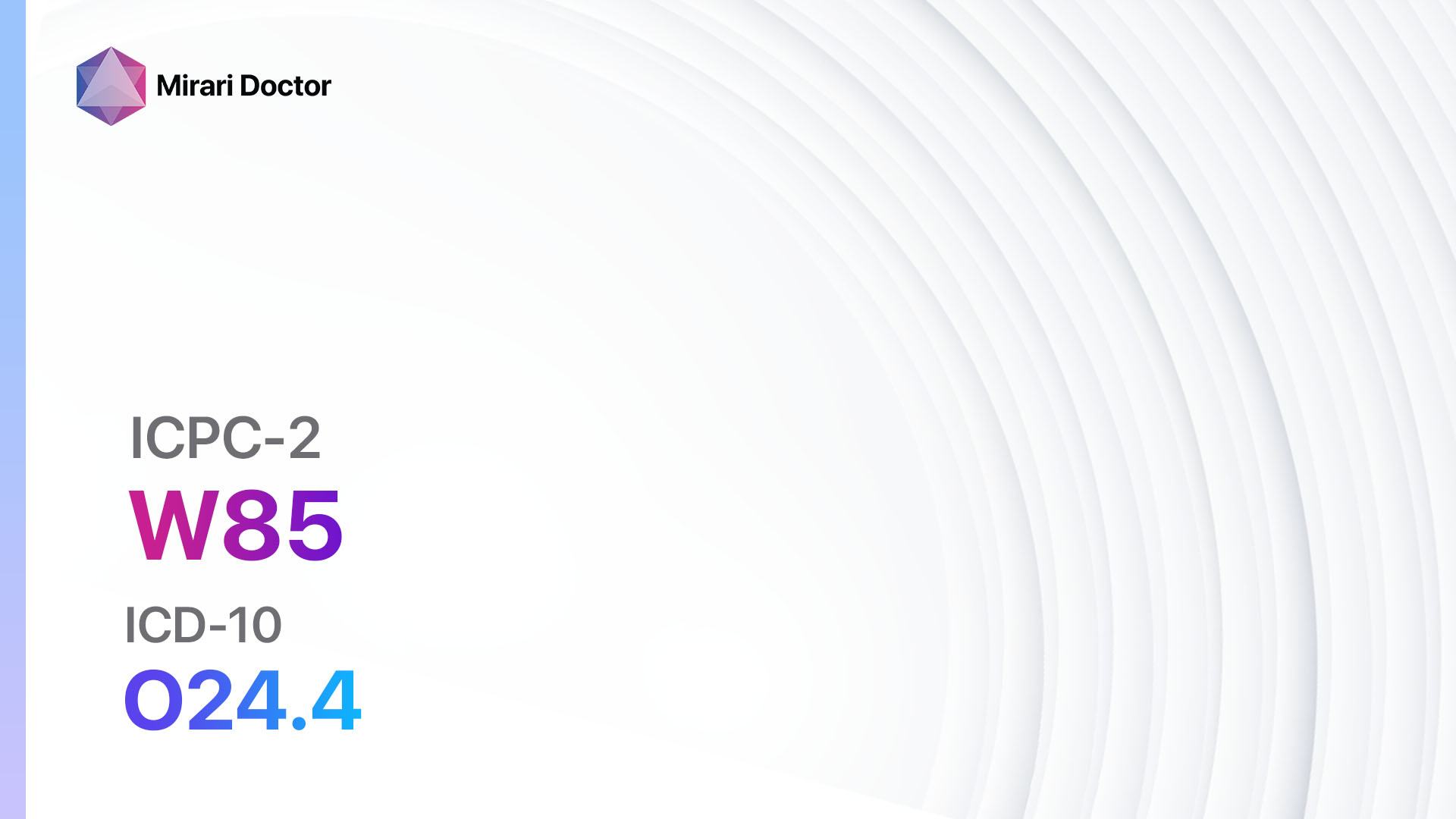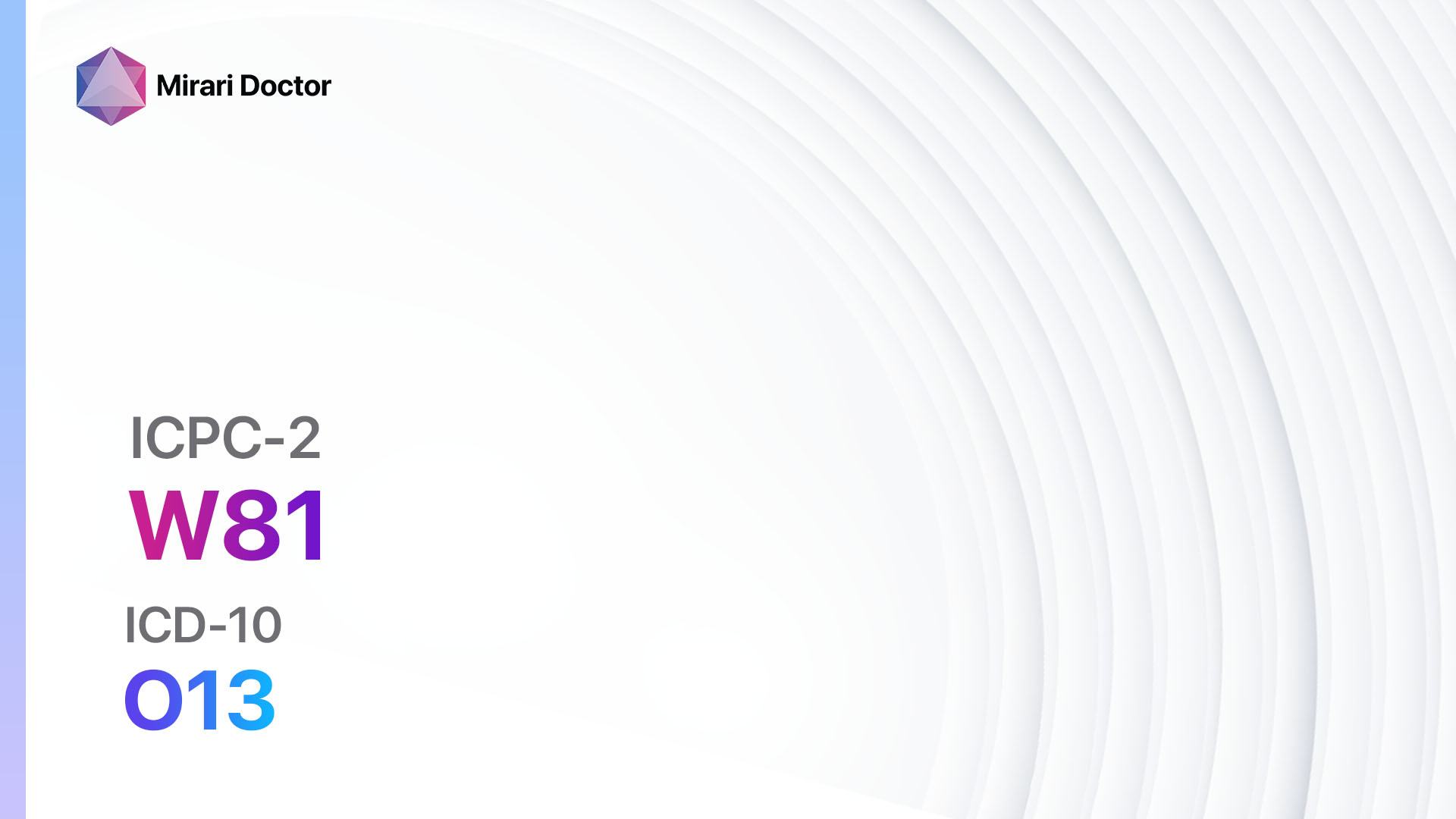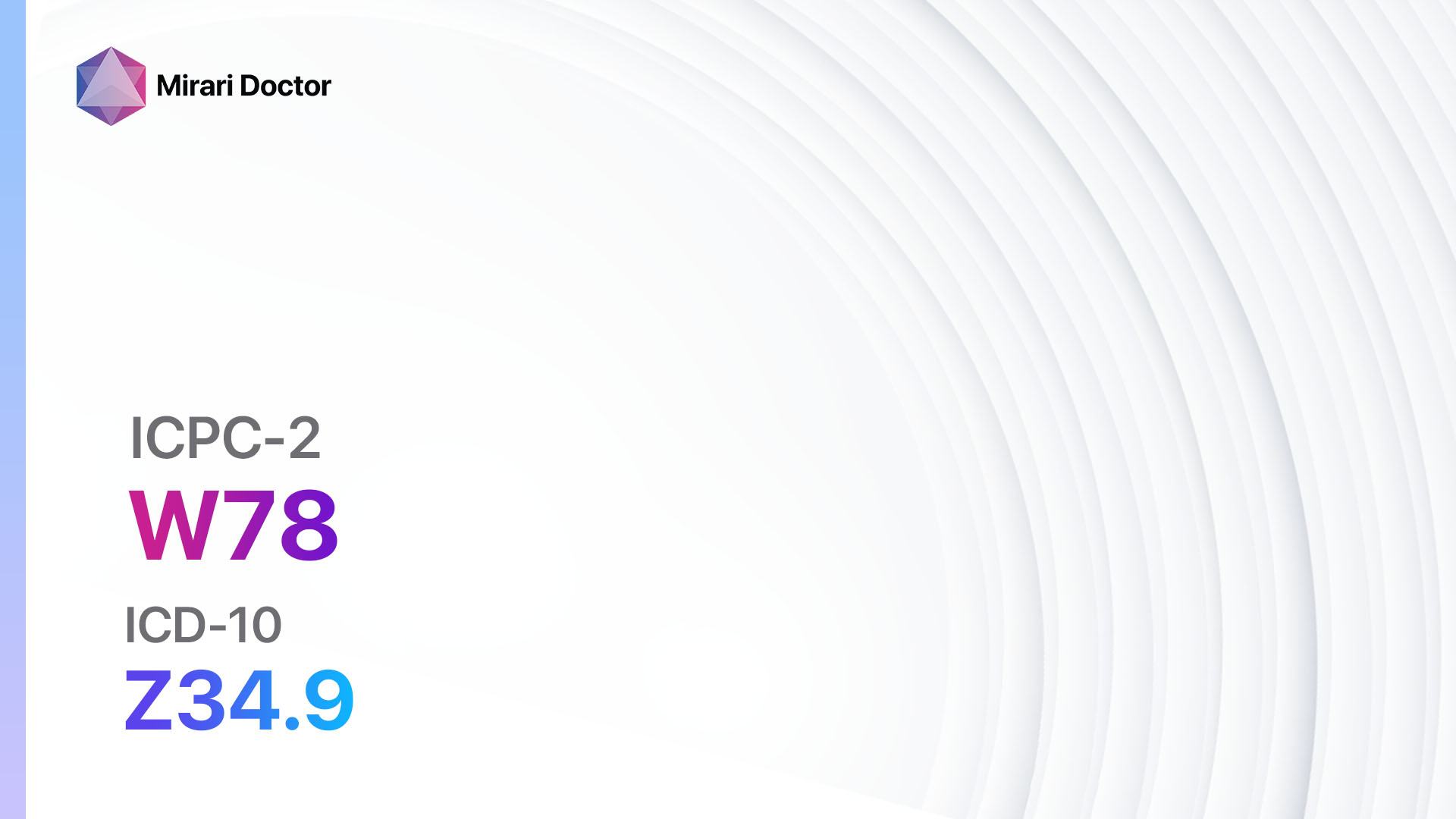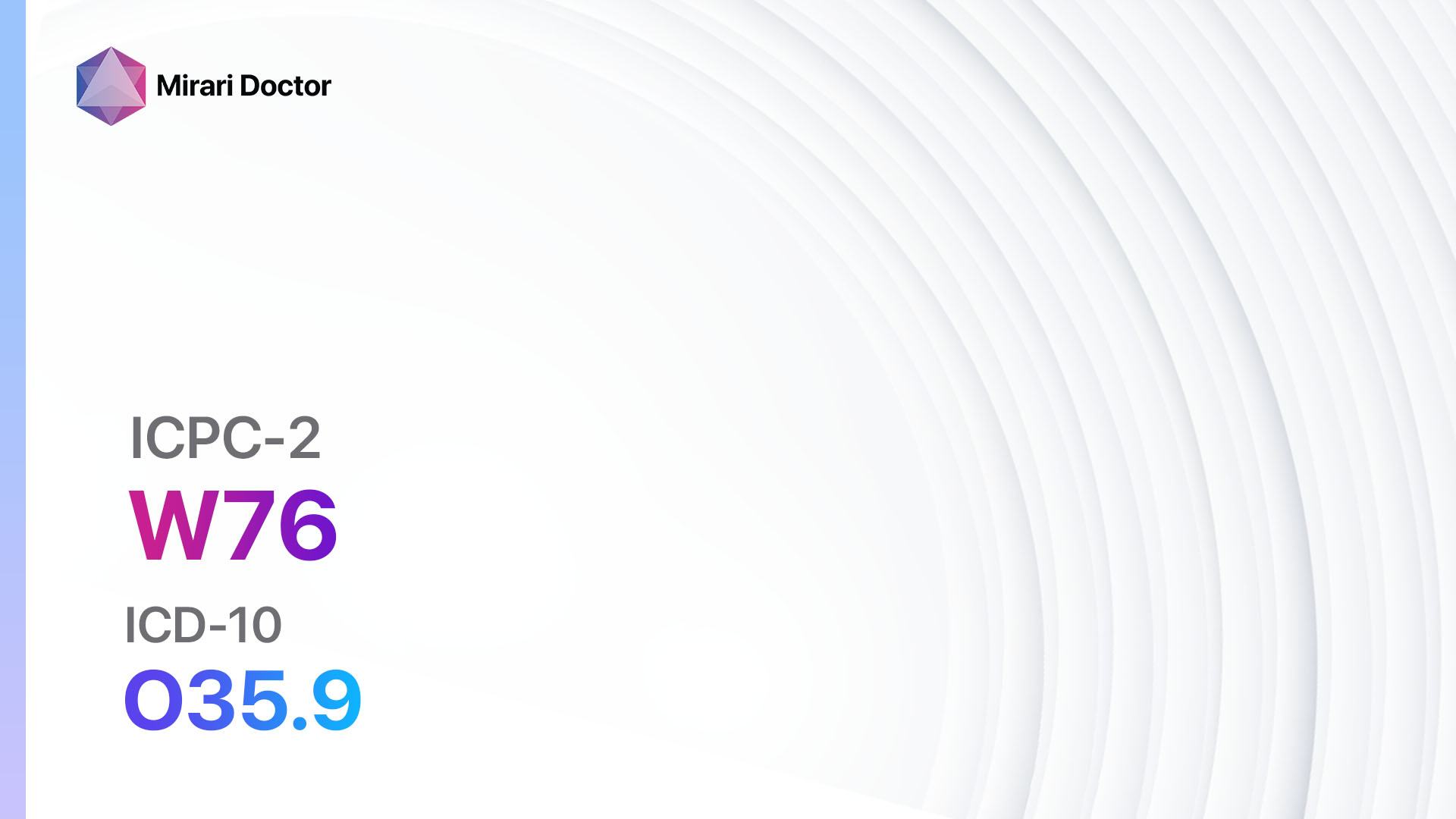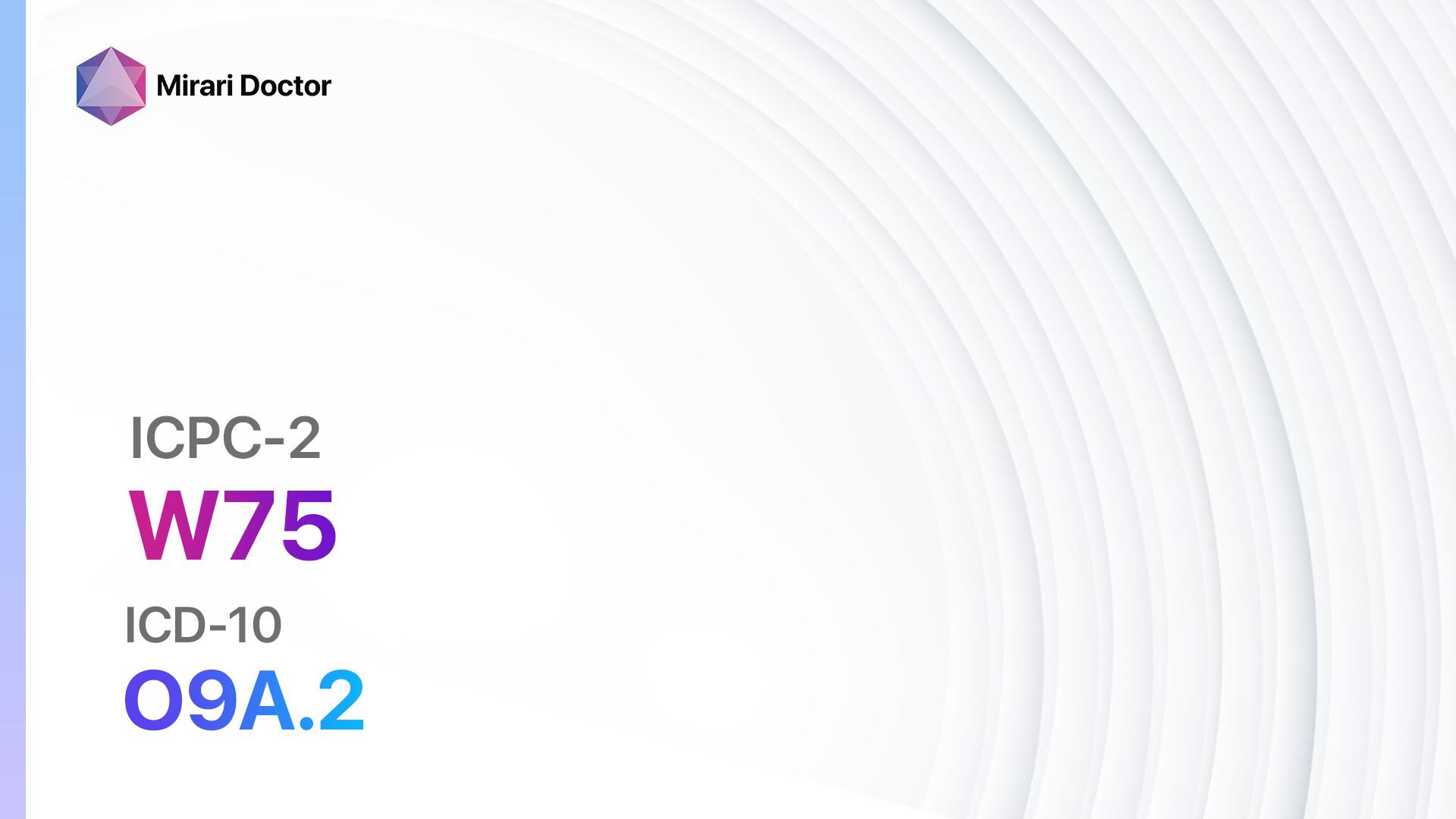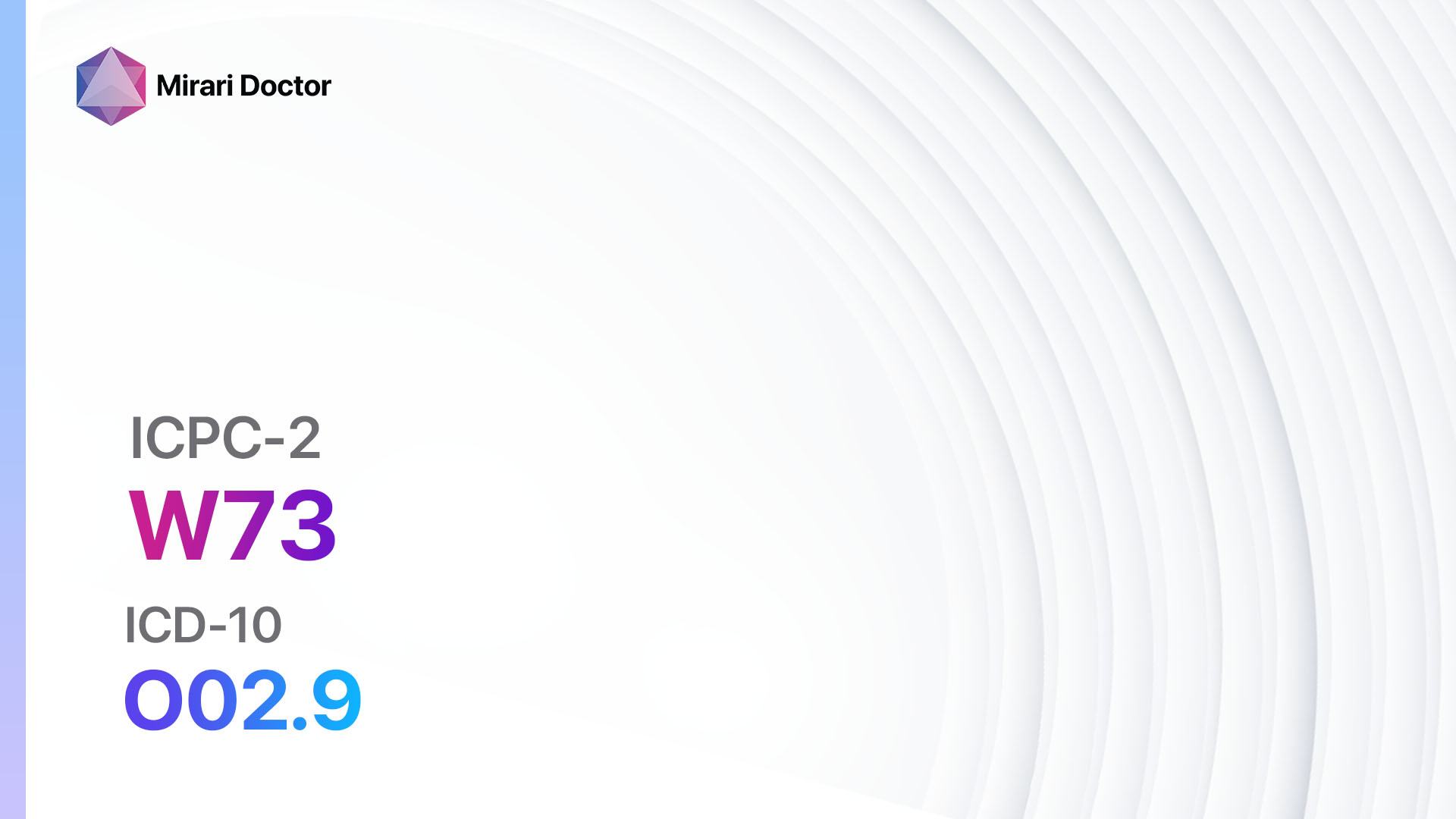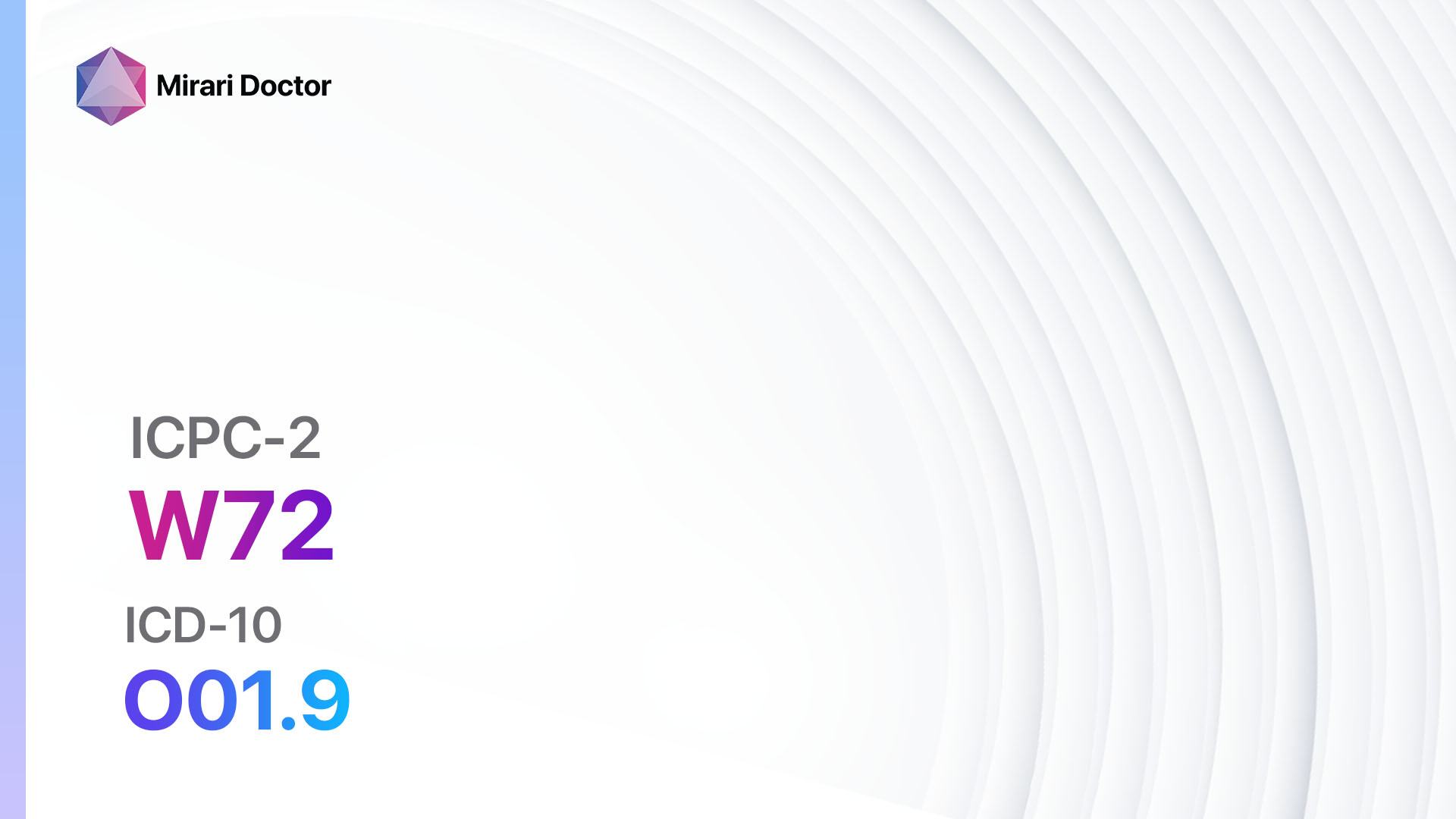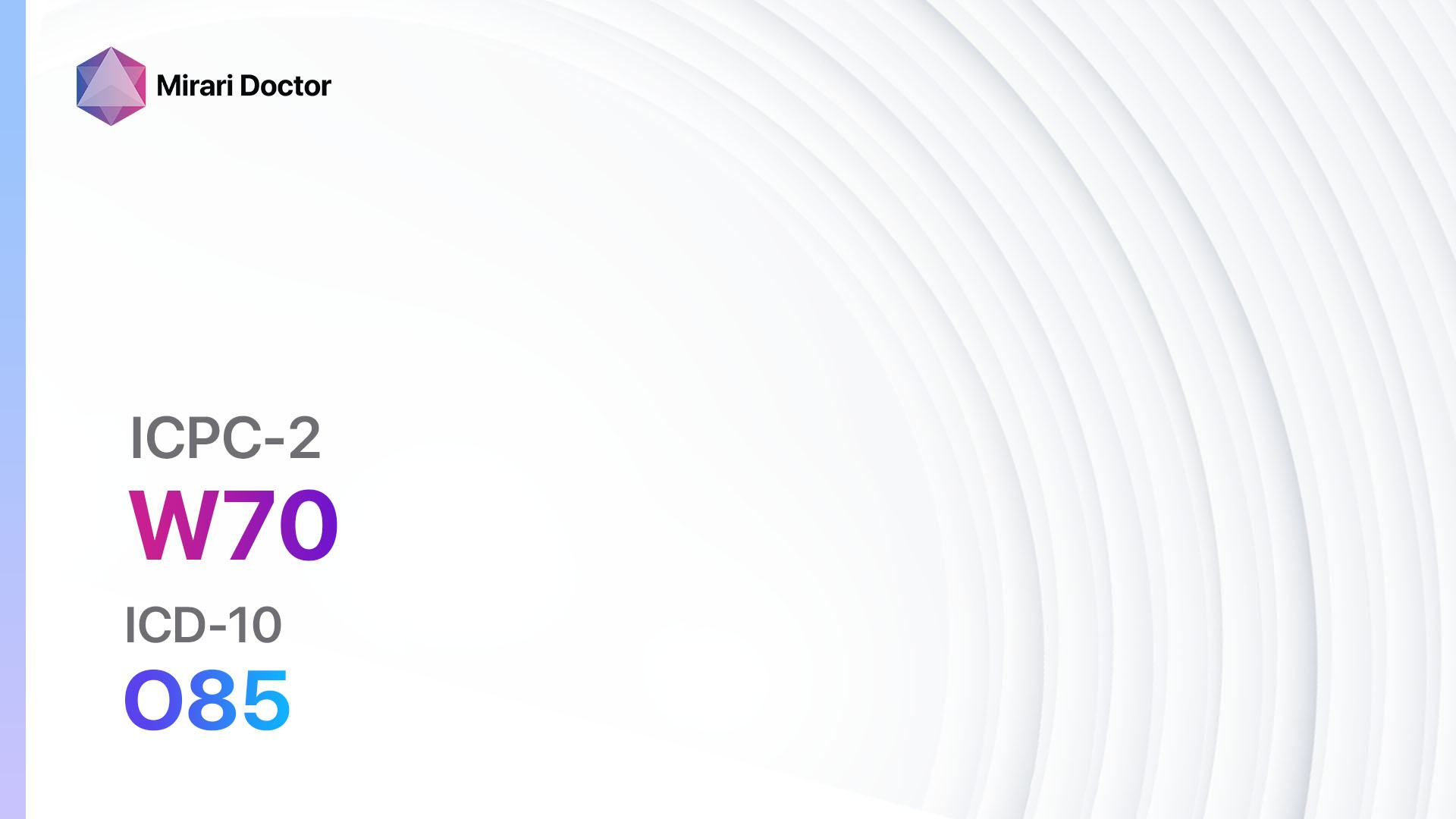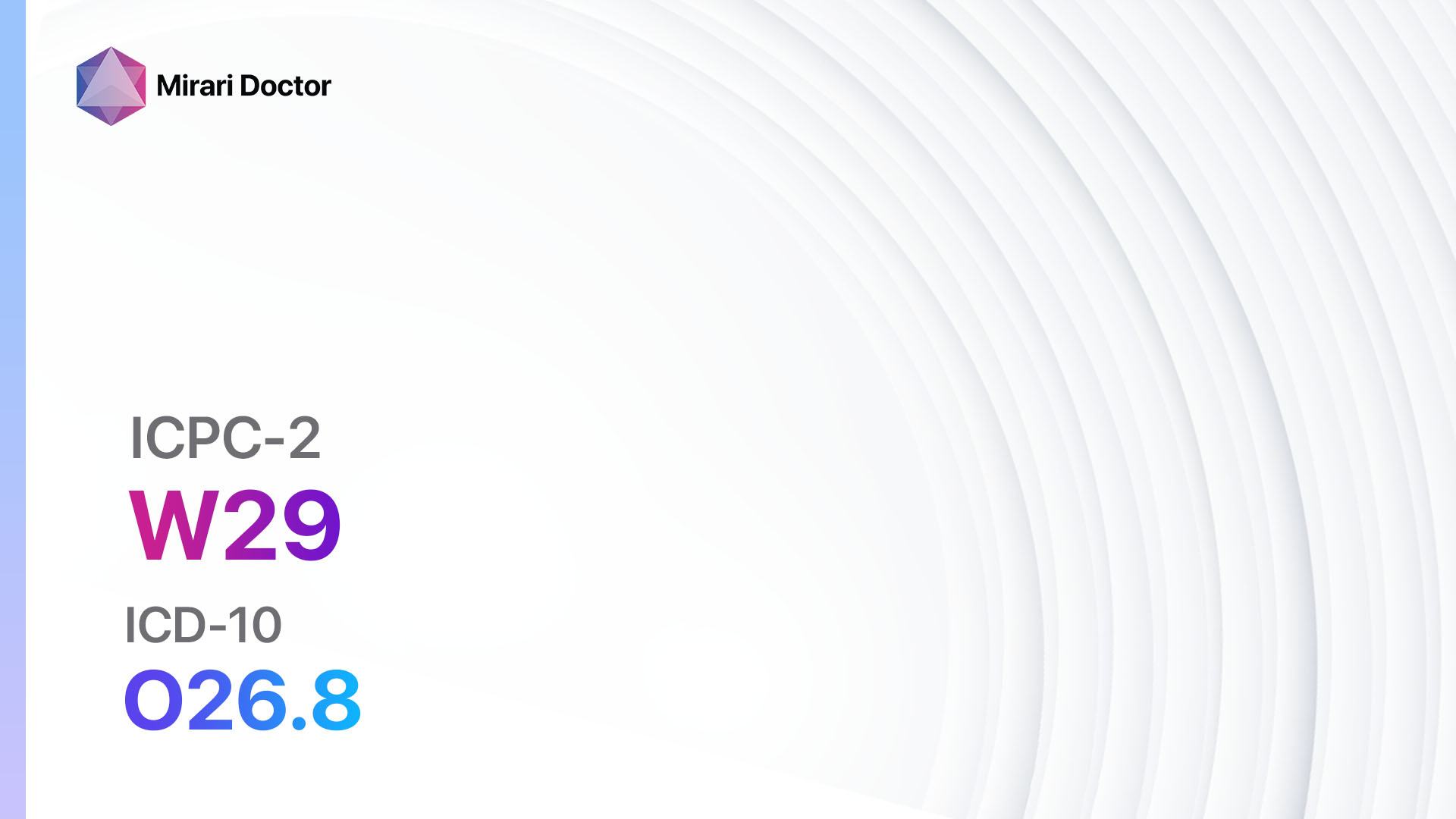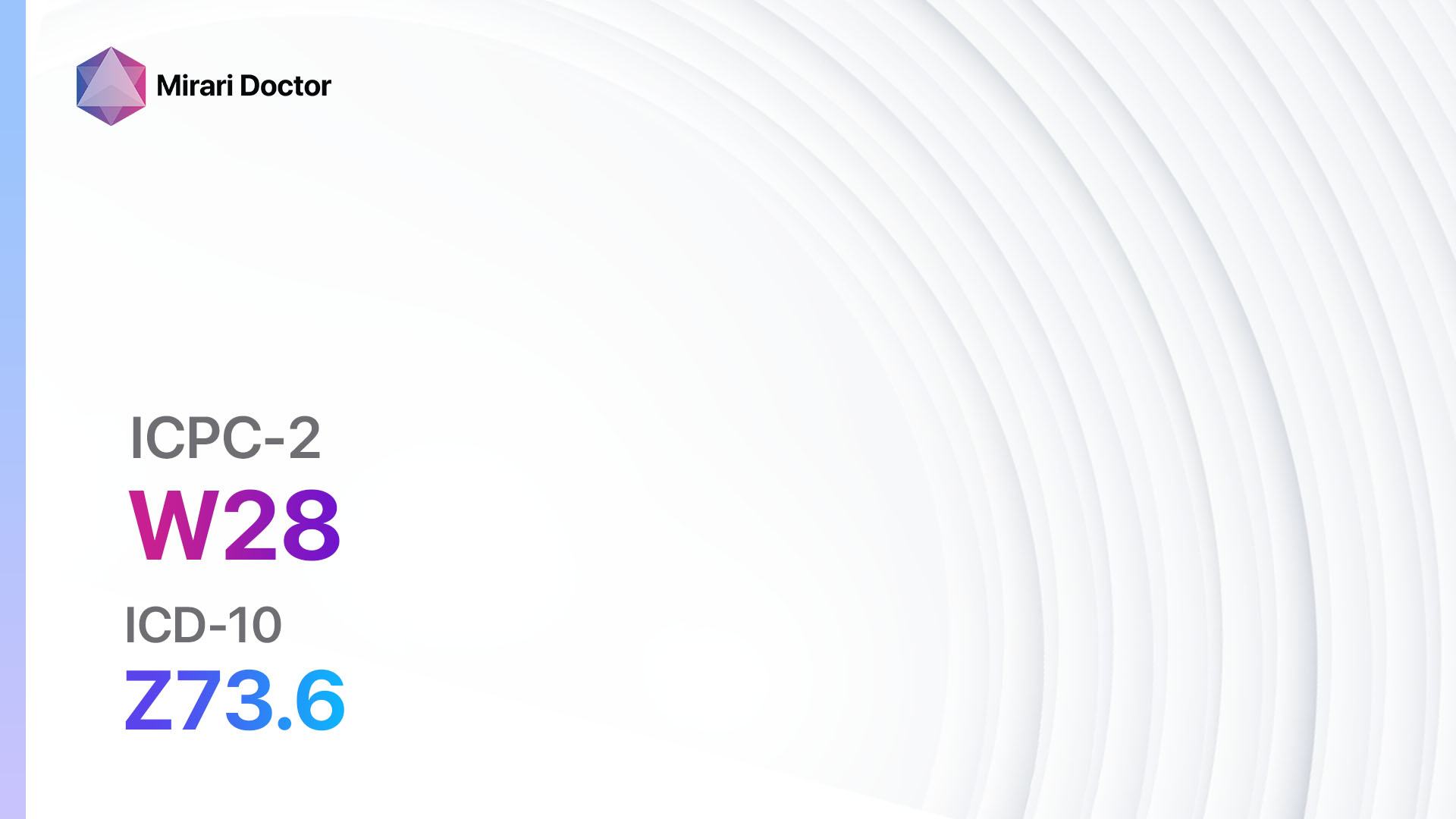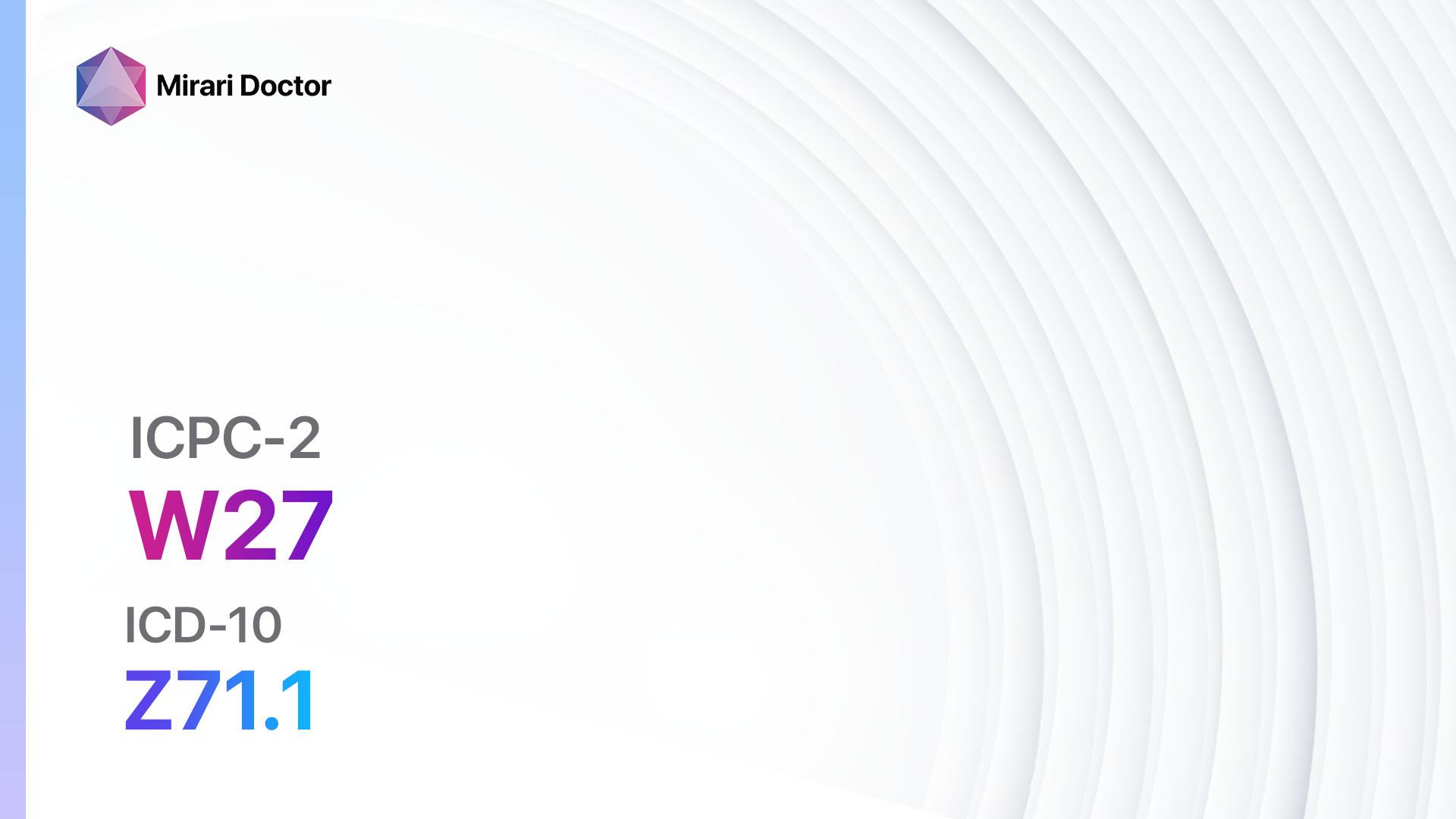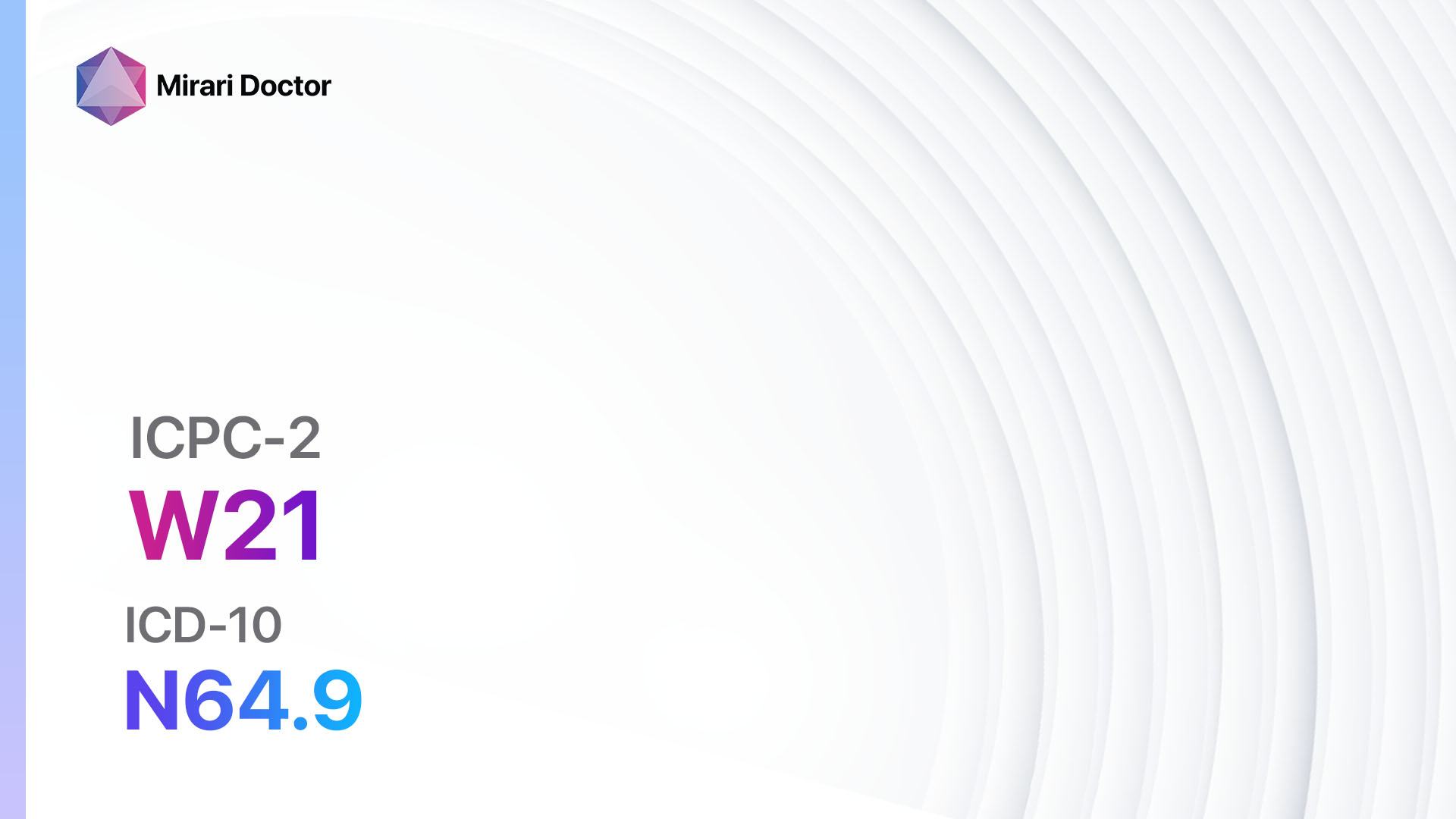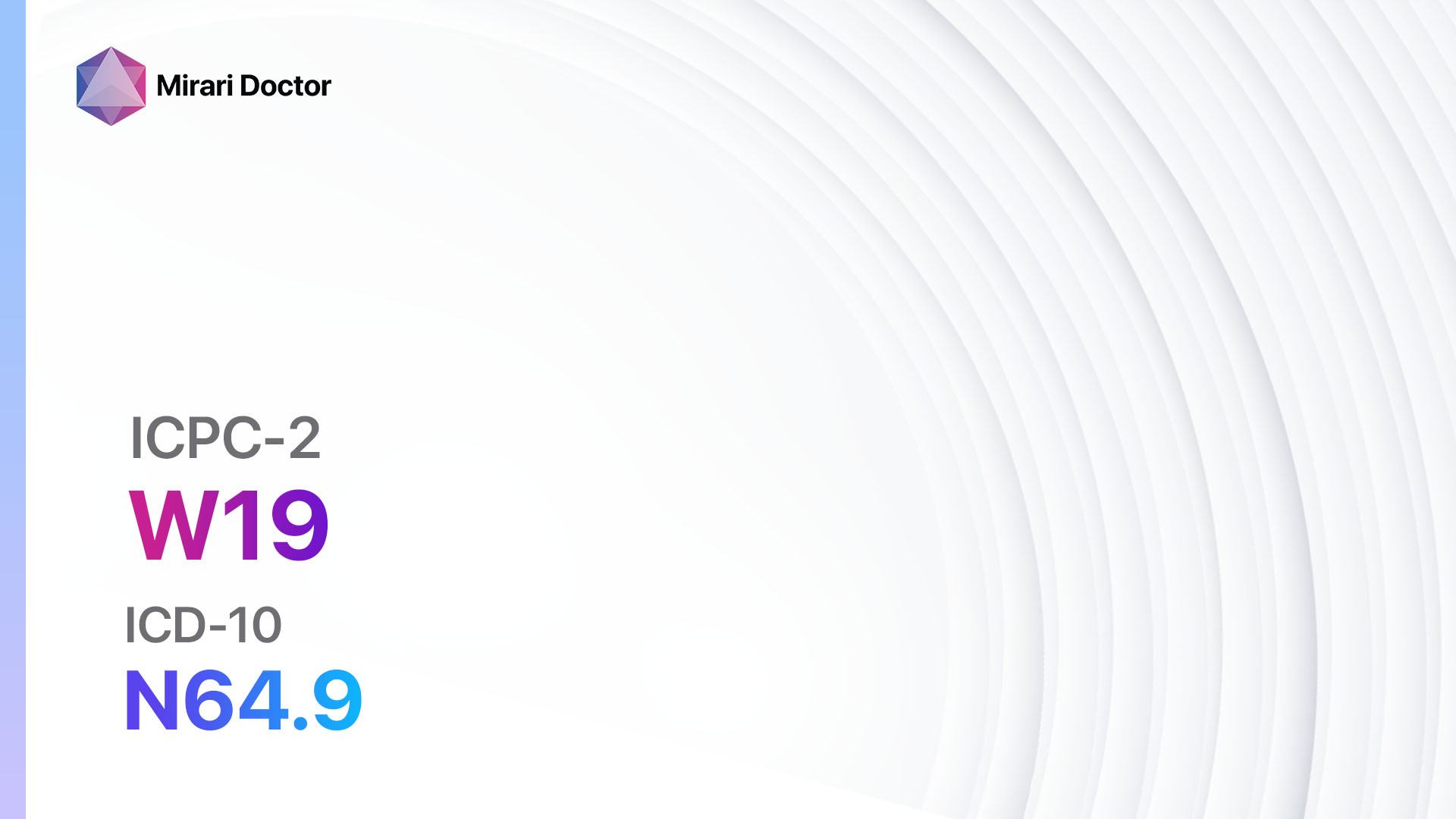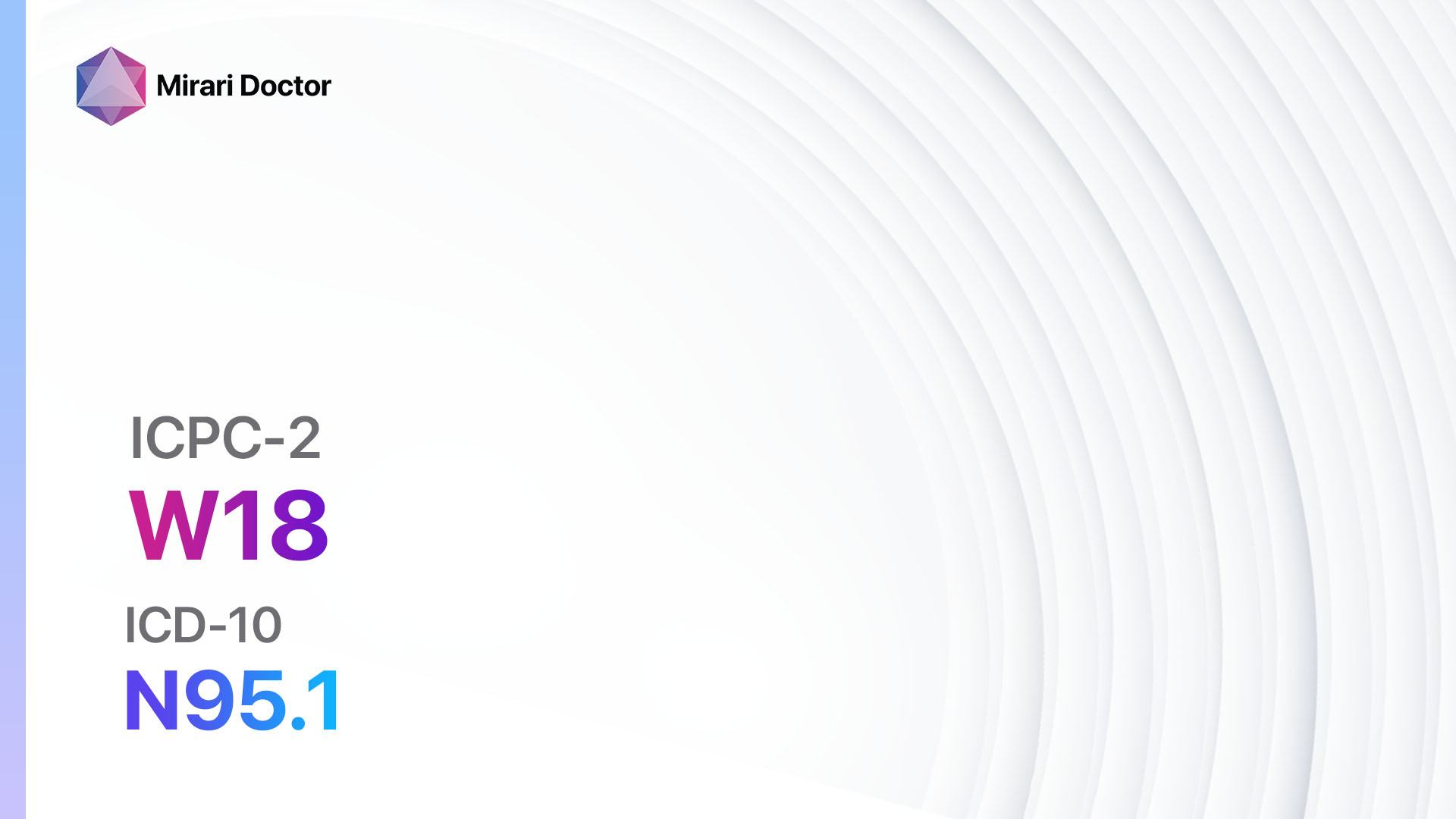
Introduction
Pregnancy high risk refers to a condition where a pregnant woman has an increased likelihood of experiencing complications during pregnancy or childbirth. These complications can pose a threat to the health of both the mother and the baby. The aim of this guide is to provide healthcare professionals with a comprehensive overview of the diagnosis and management of pregnancy high risk.
Codes
- ICPC-2 Code: W84 Pregnancy high risk[1]
- ICD-10 Code: Z35.9 Supervision of high-risk pregnancy, unspecified[2]
Symptoms
- High blood pressure: Elevated blood pressure readings during pregnancy.[3]
- Gestational diabetes: Development of diabetes during pregnancy.[4]
- Preterm labor: Contractions and cervical changes occurring before 37 weeks of gestation.[5]
- Preeclampsia: High blood pressure and signs of damage to other organ systems, typically after 20 weeks of gestation.[6]
- Placenta previa: Placenta partially or completely covering the cervix.[7]
- Placental abruption: Premature separation of the placenta from the uterine wall.[8]
- Fetal growth restriction: Slowed growth of the baby in the womb.[9]
Causes
- Advanced maternal age: Women over the age of 35 are at a higher risk of pregnancy complications.[10].
- Multiple pregnancies: Carrying twins, triplets, or more increases the risk of complications.
- Chronic medical conditions: Pre-existing conditions such as diabetes, high blood pressure, or kidney disease can increase the risk.
- Previous pregnancy complications: Women who have experienced complications in previous pregnancies are at a higher risk.
- Lifestyle factors: Smoking, alcohol consumption, and drug use can increase the risk of pregnancy complications.
Diagnostic Steps
Medical History
- Gather information about the patient’s age, previous pregnancies, and any history of pregnancy complications.
- Identify any chronic medical conditions or lifestyle factors that may increase the risk.
- Assess the patient’s family history for any genetic conditions or pregnancy complications.
Physical Examination
- Measure the patient’s blood pressure to identify any signs of hypertension.
- Assess the patient’s weight and body mass index (BMI) to determine if they are at a healthy weight for pregnancy.
- Perform a pelvic examination to check the position of the cervix and assess for any abnormalities.
Laboratory Tests
- Blood tests: Measure blood glucose levels to screen for gestational diabetes. Check for any abnormalities in liver function, kidney function, or blood clotting.
- Urine tests: Assess for proteinuria, which can be a sign of preeclampsia.
- Genetic testing: Offer genetic screening tests to identify any potential genetic conditions or chromosomal abnormalities in the baby.
Diagnostic Imaging
- Ultrasound: Use ultrasound imaging to assess fetal growth, placental position, and detect any abnormalities.
- Doppler ultrasound: Measure blood flow in the umbilical artery to assess fetal well-being.
- Magnetic resonance imaging (MRI): Use MRI to evaluate the placenta and detect any abnormalities.
Other Tests
- Non-stress test: Monitor the baby’s heart rate and movement to assess fetal well-being.
- Biophysical profile: Combine ultrasound and non-stress testing to evaluate fetal well-being.
- Amniocentesis: Collect a sample of amniotic fluid to test for genetic conditions or chromosomal abnormalities.
Follow-up and Patient Education
- Schedule regular follow-up appointments to monitor the patient’s condition and assess fetal well-being.
- Provide education on the signs and symptoms of complications and when to seek medical attention.
- Offer emotional support and counseling to address any concerns or anxieties the patient may have.
Possible Interventions
Traditional Interventions
Medications:
Top 5 drugs for Pregnancy high risk:
- Progesterone:
- Cost: Varies depending on the formulation and dosage.
- Contraindications: Known or suspected pregnancy, history of blood clots, liver disease.
- Side effects: Nausea, breast tenderness, mood changes.
- Severe side effects: Allergic reactions, difficulty breathing, chest pain.
- Drug interactions: None reported.
- Warning: Use with caution in patients with a history of depression or asthma.
- Antihypertensive medications (e.g., Methyldopa, Labetalol):
- Cost: Varies depending on the medication and dosage.
- Contraindications: Allergy to the medication, certain heart conditions.
- Side effects: Dizziness, fatigue, headache.
- Severe side effects: Severe allergic reactions, liver problems.
- Drug interactions: Other blood pressure medications, certain antidepressants.
- Warning: Regular blood pressure monitoring is required.
- Insulin:
- Cost: Varies depending on the type and dosage.
- Contraindications: Allergy to insulin, certain medical conditions.
- Side effects: Low blood sugar, weight gain.
- Severe side effects: Severe allergic reactions, hypoglycemia.
- Drug interactions: Certain medications can affect blood sugar levels.
- Warning: Regular blood sugar monitoring is required.
- Anticoagulants (e.g., Heparin, Low molecular weight heparin):
- Cost: Varies depending on the medication and dosage.
- Contraindications: Active bleeding, certain medical conditions.
- Side effects: Bruising, bleeding at injection site.
- Severe side effects: Severe bleeding, allergic reactions.
- Drug interactions: Other blood thinners, certain antibiotics.
- Warning: Regular monitoring of blood clotting parameters is required.
- Corticosteroids (e.g., Betamethasone, Dexamethasone):
- Cost: Varies depending on the medication and dosage.
- Contraindications: Allergy to corticosteroids, certain medical conditions.
- Side effects: Increased appetite, weight gain, mood changes.
- Severe side effects: Adrenal insufficiency, osteoporosis.
- Drug interactions: Certain medications can interact with corticosteroids.
- Warning: Use with caution in patients with diabetes or high blood pressure.
Surgical Procedures:
- Cesarean section: Delivery of the baby through an incision in the abdomen and uterus. Cost: $20,000 to $50,000.
- Cerclage: Placement of a stitch around the cervix to prevent premature opening. Cost: $5,000 to $10,000.
- Placenta previa management: Depending on the severity, management may involve bed rest, hospitalization, or cesarean delivery. Cost: Varies depending on the specific intervention required.
Alternative Interventions
- Acupuncture: May help reduce stress and promote relaxation during pregnancy. Cost: $60-$120 per session.
- Chiropractic care: Can help alleviate musculoskeletal pain and improve overall well-being. Cost: $50-$200 per session.
- Prenatal yoga: Can improve flexibility, strength, and relaxation during pregnancy. Cost: $15-$30 per class.
- Massage therapy: Can help relieve muscle tension and promote relaxation. Cost: $60-$120 per session.
- Herbal supplements: Some herbal supplements, such as ginger for nausea, may provide relief during pregnancy. Cost: Varies depending on the specific supplement.
Lifestyle Interventions
- Healthy diet: Encourage a balanced diet rich in fruits, vegetables, whole grains, and lean proteins.
- Regular exercise: Recommend moderate-intensity exercise for at least 150 minutes per week, with approval from a healthcare provider.
- Stress management: Encourage stress-reducing activities such as meditation, deep breathing exercises, or prenatal yoga.
- Adequate sleep: Emphasize the importance of getting enough sleep and resting when needed.
- Avoidance of harmful substances: Advise against smoking, alcohol consumption, and drug use during pregnancy.
It is important to note that the cost ranges provided are approximate and may vary depending on the location and availability of the interventions. Healthcare professionals should consider the individual patient’s needs and preferences when recommending interventions for pregnancy high risk.
Mirari Cold Plasma Alternative Intervention
Understanding Mirari Cold Plasma
- Safe and Non-Invasive Treatment: Mirari Cold Plasma is a safe and non-invasive treatment option for various skin conditions. It does not require incisions, minimizing the risk of scarring, bleeding, or tissue damage.
- Efficient Extraction of Foreign Bodies: Mirari Cold Plasma facilitates the removal of foreign bodies from the skin by degrading and dissociating organic matter, allowing easier access and extraction.
- Pain Reduction and Comfort: Mirari Cold Plasma has a local analgesic effect, providing pain relief during the treatment, making it more comfortable for the patient.
- Reduced Risk of Infection: Mirari Cold Plasma has antimicrobial properties, effectively killing bacteria and reducing the risk of infection.
- Accelerated Healing and Minimal Scarring: Mirari Cold Plasma stimulates wound healing and tissue regeneration, reducing healing time and minimizing the formation of scars.
Mirari Cold Plasma Prescription
Video instructions for using Mirari Cold Plasma Device – W84 Pregnancy high risk (ICD-10:Z35.9)
| Mild | Moderate | Severe |
| Mode setting: 1 (Infection) Location: 2 (Prostate & Uterus) Morning: 15 minutes, Evening: 15 minutes |
Mode setting: 1 (Infection) Location: 2 (Prostate & Uterus) Morning: 30 minutes, Lunch: 30 minutes, Evening: 30 minutes |
Mode setting: 1 (Infection) Location: 2 (Prostate & Uterus) Morning: 30 minutes, Lunch: 30 minutes, Evening: 30 minutes |
| Mode setting: 2 (Wound Healing) Location: 2 (Prostate & Uterus) Morning: 15 minutes, Evening: 15 minutes |
Mode setting: 2 (Wound Healing) Location: 2 (Prostate & Uterus) Morning: 30 minutes, Lunch: 30 minutes, Evening: 30 minutes |
Mode setting: 2 (Wound Healing) Location: 2 (Prostate & Uterus) Morning: 30 minutes, Lunch: 30 minutes, Evening: 30 minutes |
| Mode setting: 1 (Infection) Location: 1 (Sacrum) Morning: 15 minutes, Evening: 15 minutes |
Mode setting: 1 (Infection) Location: 1 (Sacrum) Morning: 30 minutes, Lunch: 30 minutes, Evening: 30 minutes |
Mode setting: 1 (Infection) Location: 1 (Sacrum) Morning: 30 minutes, Lunch: 30 minutes, Evening: 30 minutes |
| Total Morning: 45 minutes approx. $7.50 USD, Evening: 45 minutes approx. $7.50 USD |
Total Morning: 90 minutes approx. $15 USD, Lunch: 90 minutes approx. $15 USD, Evening: 90 minutes approx. $15 USD |
Total Morning: 90 minutes approx. $15 USD, Lunch: 90 minutes approx. $15 USD, Evening: 90 minutes approx. $15 USD |
| Usual treatment for 7-60 days approx. $105 USD – $900 USD | Usual treatment for 6-8 weeks approx. $1,890 USD – $2,520 USD |
Usual treatment for 3-6 months approx. $4,050 USD – $8,100 USD
|
 |
|
Use the Mirari Cold Plasma device to treat Pregnancy high risk effectively.
WARNING: MIRARI COLD PLASMA IS DESIGNED FOR THE HUMAN BODY WITHOUT ANY ARTIFICIAL OR THIRD PARTY PRODUCTS. USE OF OTHER PRODUCTS IN COMBINATION WITH MIRARI COLD PLASMA MAY CAUSE UNPREDICTABLE EFFECTS, HARM OR INJURY. PLEASE CONSULT A MEDICAL PROFESSIONAL BEFORE COMBINING ANY OTHER PRODUCTS WITH USE OF MIRARI.
Step 1: Cleanse the Skin
- Start by cleaning the affected area of the skin with a gentle cleanser or mild soap and water. Gently pat the area dry with a clean towel.
Step 2: Prepare the Mirari Cold Plasma device
- Ensure that the Mirari Cold Plasma device is fully charged or has fresh batteries as per the manufacturer’s instructions. Make sure the device is clean and in good working condition.
- Switch on the Mirari device using the power button or by following the specific instructions provided with the device.
- Some Mirari devices may have adjustable settings for intensity or treatment duration. Follow the manufacturer’s instructions to select the appropriate settings based on your needs and the recommended guidelines.
Step 3: Apply the Device
- Place the Mirari device in direct contact with the affected area of the skin. Gently glide or hold the device over the skin surface, ensuring even coverage of the area experiencing.
- Slowly move the Mirari device in a circular motion or follow a specific pattern as indicated in the user manual. This helps ensure thorough treatment coverage.
Step 4: Monitor and Assess:
- Keep track of your progress and evaluate the effectiveness of the Mirari device in managing your Pregnancy high risk. If you have any concerns or notice any adverse reactions, consult with your health care professional.
Note
This guide is for informational purposes only and should not replace the advice of a medical professional. Always consult with your healthcare provider or a qualified medical professional for personal advice, diagnosis, or treatment. Do not solely rely on the information presented here for decisions about your health. Use of this information is at your own risk. The authors of this guide, nor any associated entities or platforms, are not responsible for any potential adverse effects or outcomes based on the content.
Mirari Cold Plasma System Disclaimer
- Purpose: The Mirari Cold Plasma System is a Class 2 medical device designed for use by trained healthcare professionals. It is registered for use in Thailand and Vietnam. It is not intended for use outside of these locations.
- Informational Use: The content and information provided with the device are for educational and informational purposes only. They are not a substitute for professional medical advice or care.
- Variable Outcomes: While the device is approved for specific uses, individual outcomes can differ. We do not assert or guarantee specific medical outcomes.
- Consultation: Prior to utilizing the device or making decisions based on its content, it is essential to consult with a Certified Mirari Tele-Therapist and your medical healthcare provider regarding specific protocols.
- Liability: By using this device, users are acknowledging and accepting all potential risks. Neither the manufacturer nor the distributor will be held accountable for any adverse reactions, injuries, or damages stemming from its use.
- Geographical Availability: This device has received approval for designated purposes by the Thai and Vietnam FDA. As of now, outside of Thailand and Vietnam, the Mirari Cold Plasma System is not available for purchase or use.
References
- International Classification Committee of WONCA. ICPC-2: International Classification of Primary Care. Oxford University Press; 1998.
- World Health Organization. ICD-10: International Statistical Classification of Diseases and Related Health Problems. 10th revision, 2nd ed. World Health Organization; 2004.
- Sibai BM. Chronic hypertension in pregnancy. Obstet Gynecol. 2002;100(2):369-377.
- American Diabetes Association. Gestational diabetes mellitus. Diabetes Care. 2004;27 Suppl 1:S88-S90.
- Goldenberg RL, Culhane JF, Iams JD, Romero R. Epidemiology and causes of preterm birth. Lancet. 2008;371(9606):75-84.
- Steegers EA, von Dadelszen P, Duvekot JJ, Pijnenborg R. Pre-eclampsia. Lancet. 2010;376(9741):631-644.
- Oyelese Y, Smulian JC. Placenta previa, placenta accreta, and vasa previa. Obstet Gynecol. 2006;107(4):927-941.
- Ananth CV, Wilcox AJ. Placental abruption and perinatal mortality in the United States. Am J Epidemiol. 2001;153(4):332-337.
- Resnik R. Intrauterine growth restriction. Obstet Gynecol. 2002;99(3):490-496.
- Cleary-Goldman J, Malone FD, Vidaver J, et al. Impact of maternal age on obstetric outcome. Obstet Gynecol. 2005;105(5 Pt 1):983-990
Related articles
Made in USA


